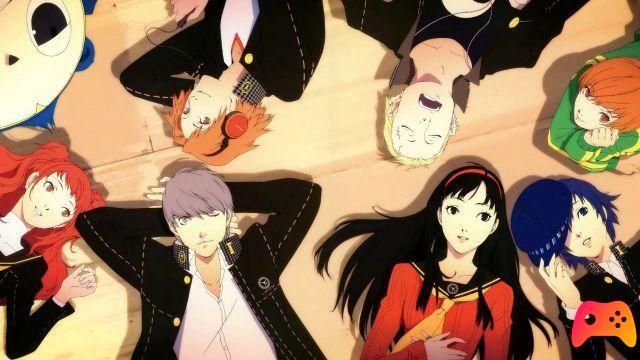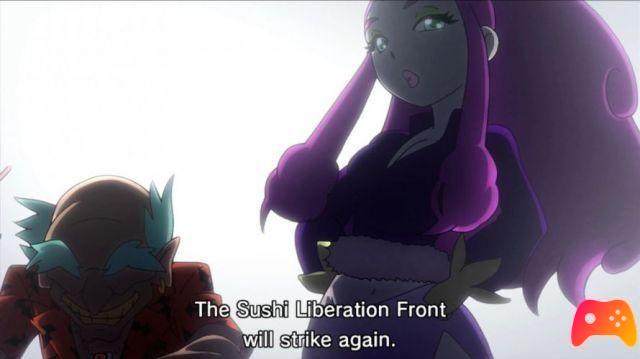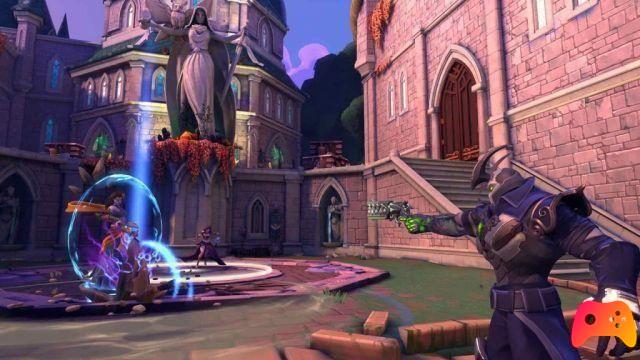An arrival with great fanfare.
The eighth title of the very successful Final Fantasy series sees the light in 1999 on PSX, just under two years after its famous predecessor, being announced and advertised in Europe as never before (who does not remember the wonderful advertising of this game where were the images of the duel between Squall and Seifer accompanied by the song Liberi Fatali?).
Well, it must immediately be said that FF VIII has enjoyed enormous success on Italian soil (much more than in Japan, or in English-speaking countries), in all probability due in large part to the fact that this chapter of the saga was the first ever to enjoy a complete Spanish translation.
This factor made it so that FF VIII could become the first chapter of the series played by many inhabitants of the peninsula (when until a few years earlier, many episodes belonging to the Final Fantasy cycle did not even see the light on European territory and gamers of the old continent they were forced to buy overseas versions), and as they say, first love is never forgotten.
In addition to this it should be remembered that Square used for this chapter a type of setting very similar to Western canons, in particular European ones, and a completely realistic graphic characterization of the characters, abandoning the super deformed style that had accompanied the saga for all previous chapters, all to make the new title even more attractive to RPG newbies.
The plot.
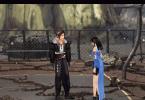 The story takes place 17 years after the first war of the Witch, when it was decided to create a group of mercenaries, called SeeD, with the task of destroying the Witch and ending the Galbadian war once and for all.
The story takes place 17 years after the first war of the Witch, when it was decided to create a group of mercenaries, called SeeD, with the task of destroying the Witch and ending the Galbadian war once and for all.
After the breathtaking introductory film, we will play the role of Squall Leonhart, a closed and introverted boy, as well as a young cadet of the SeeD of the Garden of Balamb.
The Gardens are military academies, open to young people of both sexes who want to become SeeDs, fearsome mercenary warriors with great combat skills and ready to serve for a fee.
One of the peculiarities of SeeDs is the use of Guardian Forces (which take the place of the evocations or espers of the previous episodes), mysterious creatures connected to the character who uses them which, as the story progresses, will be discovered to be the cause of a progressive loss memories in the minds of SeeDs.
During an exercise, the protagonist is wounded in a fight with the GunBlades (weapons half sword half rifle) by Seifer, his rival inside the Garden, and both young people from this moment on will carry scars engraved on their faces. I remember this duel.
We will then take control of Squall inside the academy infirmary, before taking the last exam to become a member of the SeeD and thus meet new characters who will join the party: Selphie, a cheerful girl from the Garden of Trabia, and Zell, an impulsive cadet capable of using martial arts in combat.
Character of fundamental importance in the game and in the life of the young Squall will be Rinoa, a sweet girl but at the same time with a decisive character, at the head of Timber's resistance to the occupation of the soldiers of Galbadia, who hides special powers.
As the story progresses Squall and the others will find themselves in a position to face the evil Witch Edea, and other members will join the party, such as Quistis, a professor of the Garden of Balamb, and Irvine, a sharpshooter who has the task of eliminating The Witch.
However, some mysteries regarding the SeeDs and the witch will soon be revealed, and the story will take a completely unexpected turn.
Many news
The game perennially revolves around the love story between Squall and Rinoa, a love story certainly developed in greater depth than the other chapters of the series, also underlined by the spectacular FMV videos that give it greater depth and embellish it with unforgettable shots. classy.
However, the plot remains on excellent levels until the end of the first cd, after which it becomes clearly monotonous, as we realize that very little has been built around the two main characters, due to the party characters (and not) as dull and anonymous as they are. never and characterized only on a graphic level, with some minimal hint of personal history, but more often without a minimum of background, and which in some ways fail to even represent valid stereotypes. The only exceptions are represented by Rinoa, Squall (who however takes up the cliché of the protagonist / lone wolf already widely seen in the past), Laguna (one of the most successful characters of the game, which you will control in some flashbacks), and the witch Edea, excellent character who without apparent explanation sadly leaves his role as nemesis of the game, for an arrival on the scene (very, I would dare to say too late) of the final enemy, who for more than half the story will never even be named, and who doesn't even do it on purpose, it will not be characterized in the least. So no trace of noteworthy nemesis, forget about the charismatic Sephiroth or the diabolical Kefka of the previous episodes.
Even on the background of the world where the characters move there would be something to say: there are some locations that have been developed at best, such as Galbadia, the Gardens (completely original elements and beautifully made not only from a graphic point of view) and a few others, while some lack any shred of background, and as well as the characters, the setting as a whole is nothing short of glossy and without substance.
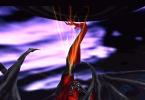 FF VIII presents some relevant innovations, first of all in terms of gameplay it should be emphasized the Junction system, which although presenting itself as the old ATB system allows the party characters to use the spells (for the first time without the use of MP, of the all absent in this chapter) by exploiting the powers of the Guardian Force (GF) they are paired with.
FF VIII presents some relevant innovations, first of all in terms of gameplay it should be emphasized the Junction system, which although presenting itself as the old ATB system allows the party characters to use the spells (for the first time without the use of MP, of the all absent in this chapter) by exploiting the powers of the Guardian Force (GF) they are paired with.
In order to use the spells (there are 32 different types of magic and each can be accumulated up to a maximum of 100 units), however, it is necessary to assimilate them from the monsters that you meet during random encounters. Furthermore, the assimilated spells can be processed into some objects or spells of a lower class, but above all they can be associated with a character parameter by increasing its value (for example HP, or strength).
Even the GFs differ a lot from the type of summons present in the previous chapters of the saga: through the use of these creatures, the characters get skill points (AP), with which it is possible to enhance their spells through new combinations, while the GF will be able to earn experience points by increasing their level. Furthermore, once the GFs are summoned, the character's energy bar disappears, giving way to that of the summoned creature.
Although simple and original, this new development system has some gaps, or rather, some big limitations, due to the poor functionality of a contradictory combat system by its nature: the spells will be used very little (the use will decrease some parameters of the characters) but we will tend to store them to enhance the various statistics, leading to relying at first on the summons of the GF, and later in the course of the game exclusively on physical attacks, which demonstrates how the elimination of the MP and the consequent idea of assimilation was certainly not a stroke of genius for the Square at the time, and probably this novelty (due to its internal contradictions) represents perhaps the worst development system in the main series of the house of the chocobo.
The first impact with the game, and with the introductory FMV is certainly impressive: Squaresoft thus demonstrated that it has made its own and greatly improved compared to the previous chapter the approach to this new type of technology, which permeates all the new work and is wisely used. in the highlights of history.
As already mentioned the characters as well as the locations have been created in a realistic style, and the graphics level of the game shows great improvements compared to its much more raw predecessor.
However, as much as the detail is the best that the old Sony gray console could offer, it is easy to see how in some cases the contrast between the characters formed by pixels and the definition of the surrounding environments is evident, especially in the long-field shots.
The sound sector is, as always, the FF series has accustomed us more than excellent, while the soundtrack entrusted once again to the master Nobuo Uematsu is certainly very suggestive, capable of giving some memorable songs such as the aforementioned Liberi Fatali (a composition to say the least not very majestic), the evergreen Eyes on Me and The Oath, for example.
From the point of view of longevity FF VIII does not differ much from the previous chapters of the series: the game represents a fairly long and lasting challenge (40 hours of gameplay guaranteed without discovering all the secrets) even if it is affected by a gameplay that is anything but transcendental which greatly limits its scope; with some additions, however, that Squaresoft could have saved: the Weapons in FF VII made sense, but here they are completely disconnected from the plot of the game; to put it briefly, if they had put Mazinger Z or Grendizer instead of weapons there would have been very little difference.
In addition to a good number of secondary quests, it is also worth noting the excellent Triple Triad card game, and the possibility for PocketStation owners to train and raise Chocobo.
Masterpiece or supreme ciofeca?
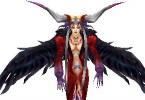 Final Fantasy VIII is a title that has made and that still causes much discussion: if on the one hand those who have approached the Square with this episode tend to consider it an unparalleled videogame masterpiece, on the other, those of the "old guard" have seen in this chapter of the saga an undoubted first step towards a process that we could define as “westernization”, a half-reproach and a real betrayal, considering FF VIII as the worst crap ever produced by Squaresoft.
Final Fantasy VIII is a title that has made and that still causes much discussion: if on the one hand those who have approached the Square with this episode tend to consider it an unparalleled videogame masterpiece, on the other, those of the "old guard" have seen in this chapter of the saga an undoubted first step towards a process that we could define as “westernization”, a half-reproach and a real betrayal, considering FF VIII as the worst crap ever produced by Squaresoft.
In reality, with this episode, Square perhaps wanted to test too many novelties, and all in one fell swoop: new graphic characterization, completely original setting, development system completely disconnected from the canons, all to widen its catchment area, attempt certainly not completely failed (6 and a half million copies sold make this game a killer application in all respects), but heavily downsized if you consider that FF VII managed to place almost 4 million copies more, albeit with many less Psx on the market, and without all the translations that Squall and his companions have benefited from.
The result is certainly a good game that presents a superfine graphic and sound realization, but that leaves much, perhaps too much to be desired in terms of plot and gameplay. A title that if on the one hand it has had the great fortune of not having competition on a global scale, on the other it has inherited the name and the heavy legacy of two predecessors that literally make it pale.




